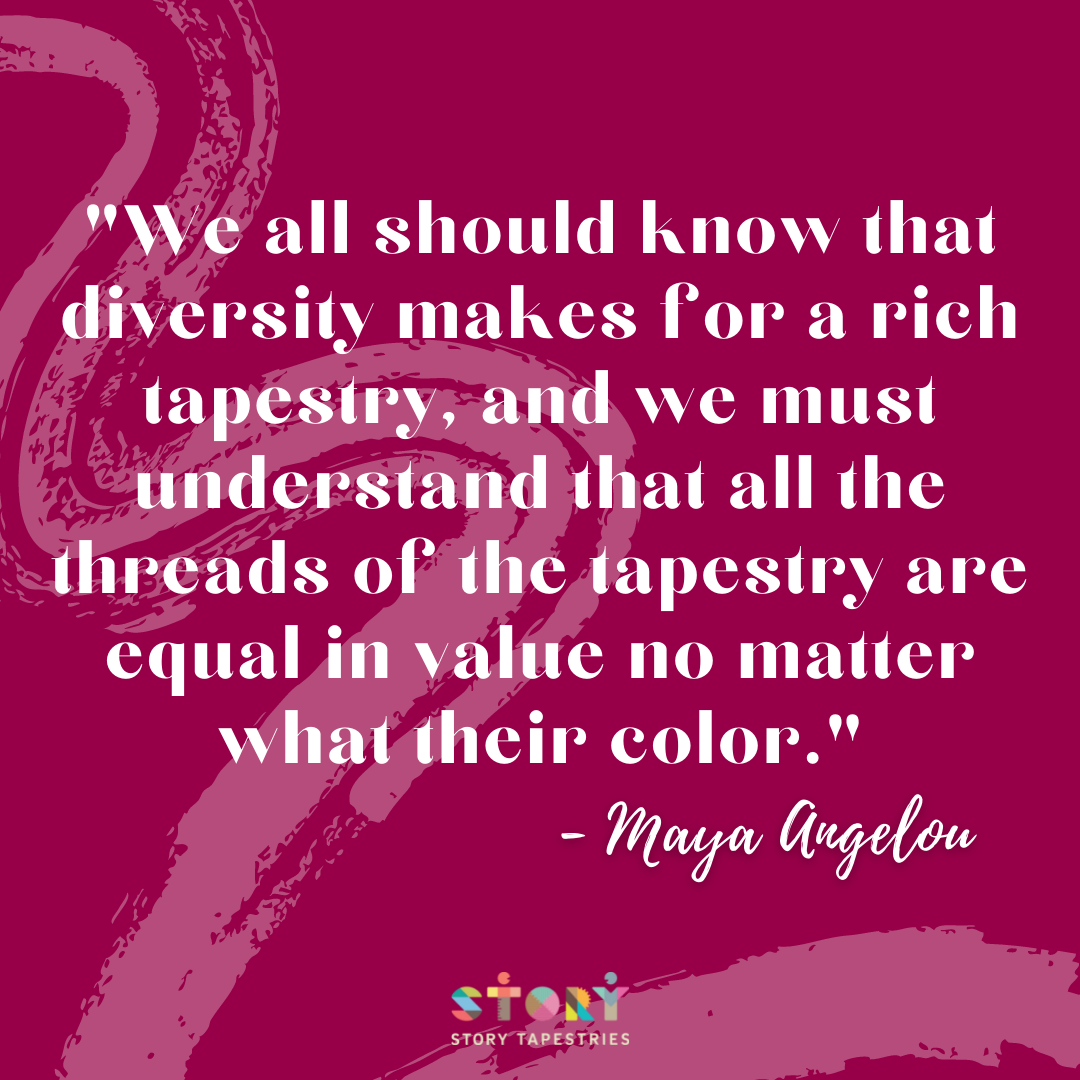Story Tapestries addresses vital community issues for millions of people of all ages and abilities using collaboration and the arts, in all forms, to create and deliver tailored, accessible programs.
Mission:
To use the arts as a powerful tool to create accessible, open spaces and opportunities for individuals to reach their highest potential and to work together for a more inclusive community.
Story Tapestries accomplishes this by:
- providing innovative, custom-designed performances, workshops and hands-on community and educational experiences;
- designing programs that develop skills, connect individuals, elevate diverse voices and celebrate youth, families, adults, and seniors; and
- engaging and impacting individuals where they live, work and thrive.
Vision:
To give individuals access to tools and resources that use the arts as a vital form of communication for expression, skills development, enhancement of community connections and celebration of unique voices and stories.
Value Statement:

With a respect for the needs of those supporting and collaborating with the organization, Story Tapestries strives to bring fiscally responsible, innovative, culturally-sensitive programming to all generations.
Our Core Values:
The Arts
The Arts are at the core of every Story Tapestries program – be it a live performance, a community conversation, a professional development workshop, a class for children, an artist-in-residency at a school or an exhibition of work. We firmly believe, and have observed, that those who integrate the arts into all aspects of their life live a richer, more fulfilling existence. Our vision is for every individual to understand how to use the arts as a vehicle for change, making a global difference in how we communicate, learn and support one another.
Creating open spaces
Providing people the opportunity, time and place to learn and express themselves is a fundamental component of Story Tapestries. We guide people to recognize the value of their story and to develop their voice. We help them create the space to listen and hear other people. Furthermore, our collaborative process both in planning and executing programs nurtures understanding as well as trust and gives people the opportunity to participate actively in the conversation.
Weaving a tapestry of diversity
Every art form is valuable. Every learning style is important. Every subject matter needs time. Every person has a story and a perspective, and every story is valuable and can benefit others. If you weave all of the art forms, stories, subjects and perspectives together you have a stronger, more resilient community.
Education is key to success
Story Tapestries seeks to activate the minds of every type of learner and help to dissolve barriers to education. Our programs incorporate evidence-based practices that develop literacy, STEAM, social-emotional and 21st century skills. We work with artists, community leaders and educators to design programs that maximize impact.
It takes the whole community to build community
Our hope, in collaboration with our partners, is always to serve children and adults equally. We have seen that in order to effect lasting change, we must engage entire communities regardless of age, race, financial situation, gender, religion and ability. Therefore, we have designed a collaborative planning process that begins with meeting organizations and individuals to listen to their stories and moves forward by collectively creating a custom-designed project that involves and serves everyone.
 Our History:
Our History:
Arianna Ross, Founder of Story Tapestries, believes in the power of stories to change communities. Her mantra that guides our mission: “It is through the laughter and tears of our tales that the lessons of life are learned.”
Arianna began in the world of performance as a theatre actress and director. She studied and performed for two and a half years with Bansi Kaul and his troupe, Rang Vidushak, in India. Bansi Kaul’s plays merged traditional tales and historical facts with political issues to highlight who and what needed to change in order for people to work together and rise above their circumstances. Arianna learned how to craft powerful stories that create the space for people to listen, laugh and cry and to always keep at the heart of stories the child, the oppressed, the innocent, the ones who feel as though they don’t have a voice in society. Bansi Kaul taught Arianna to empower the audience with every show or workshop to find their story and learn to speak their mind. Arianna’s time in India impacted the way she performed, devised plays, directed, taught and ultimately led her to found Story Tapestries.

Every Story Tapestries Master Teaching Artist has more than a decade of experience using the arts (performing, visual, creative writing and more) as the vehicle to teach reading, writing, STEAM, problem solving, collaboration and critical thinking. We have done this through artist-in-residencies in schools, community performances and festivals, professional development workshops and family engagement events. We’ve worked with many distinguished organizations including The Kennedy Center, Young Audiences of Maryland (YAMD), Washington Performing Arts (WPA), WolfTrap and the Strathmore Performing Arts Center.
Since obtaining 501c3 status in 2010, Story Tapestries has reached over 1 million people in over 1,300 venues, primarily in communities with limited economic capacity and limited access to arts and arts education opportunities. Our aim is to establish community coalitions of organizations and individuals prepared to support meaningful, long-lasting arts-based programs.

Story Tapestries reaches out into communities and brings together partners from schools – teachers, students, administrators and families – and connects them with businesses, foundations, government agencies, arts organizations and other interested parties from their local community. These coalitions help communities design long-term programs to support improvement in such areas as school attendance and graduation rates, employment rates, housing stability, job retention, incarceration rates, and participation in community events. In addition, these coalitions achieve more intangible benefits such as creating a sense of belonging and opening communication channels that help people feel heard and understood.


